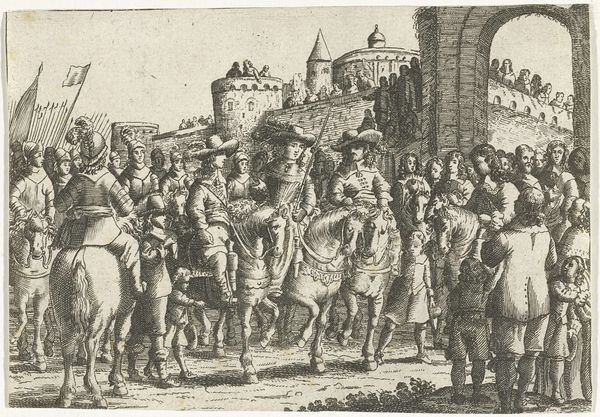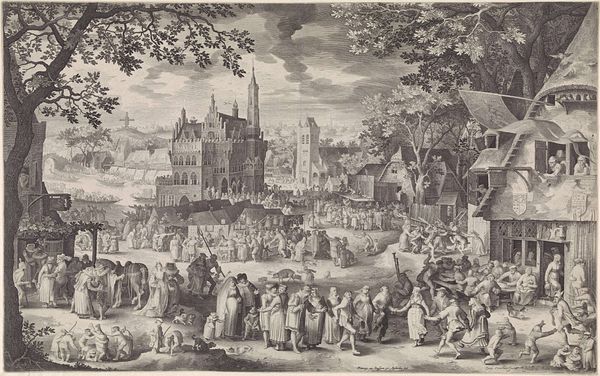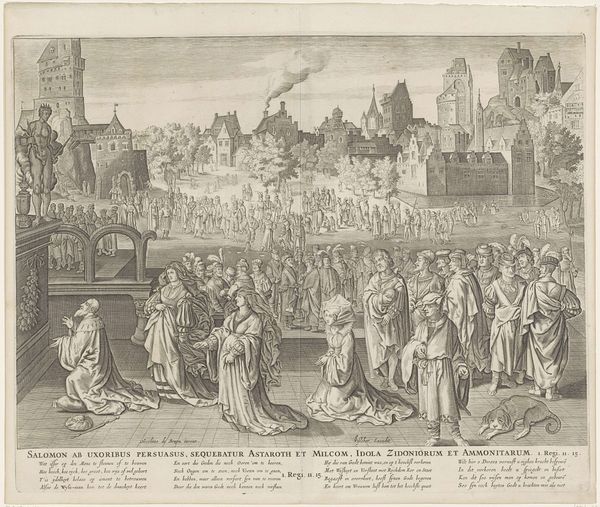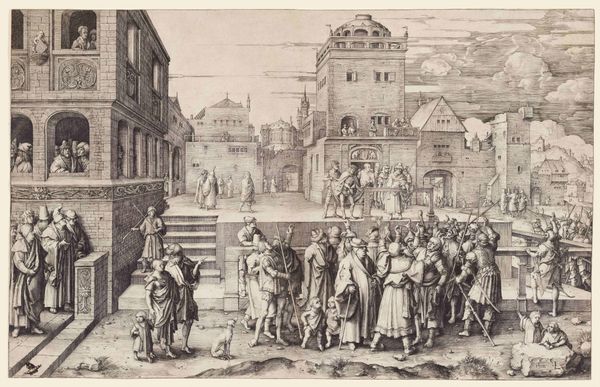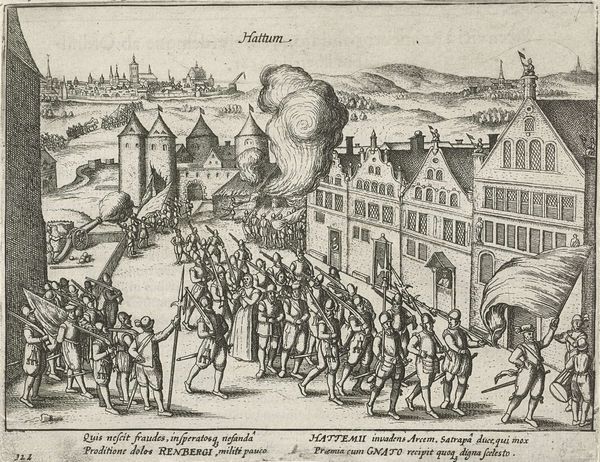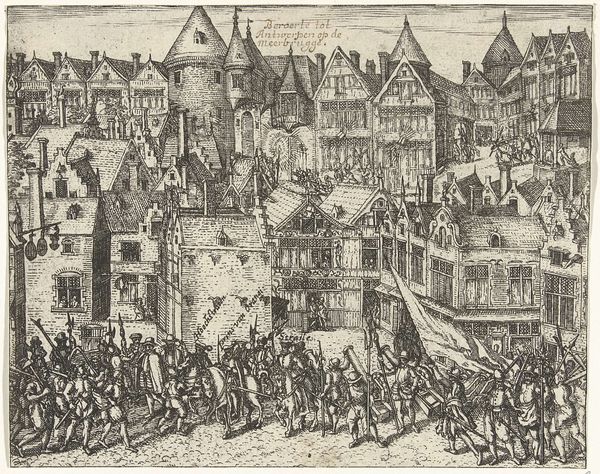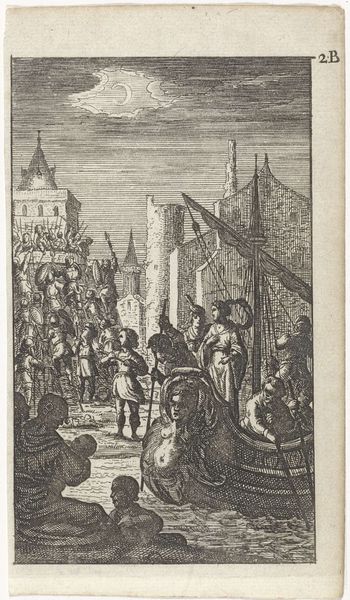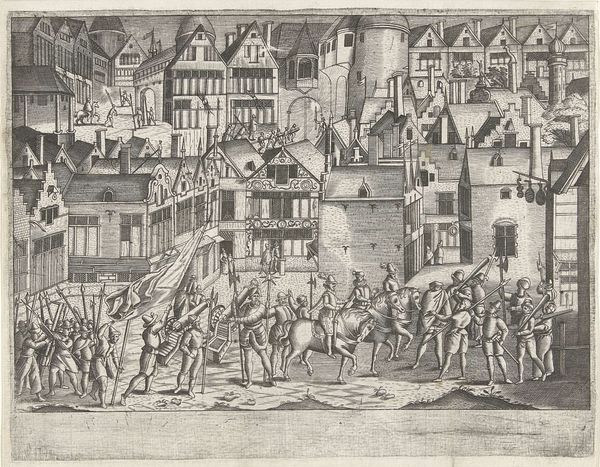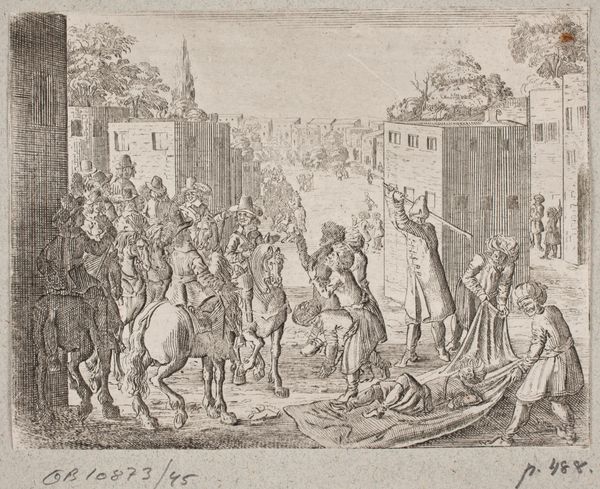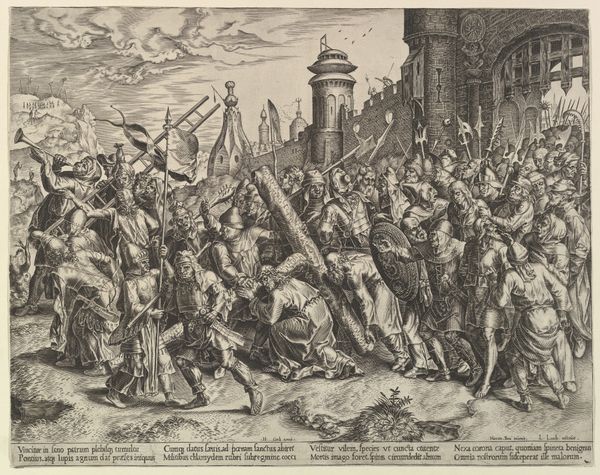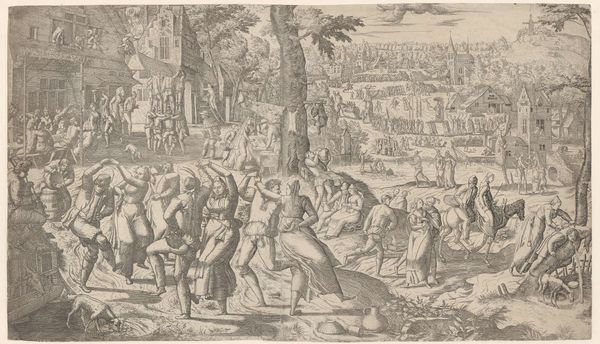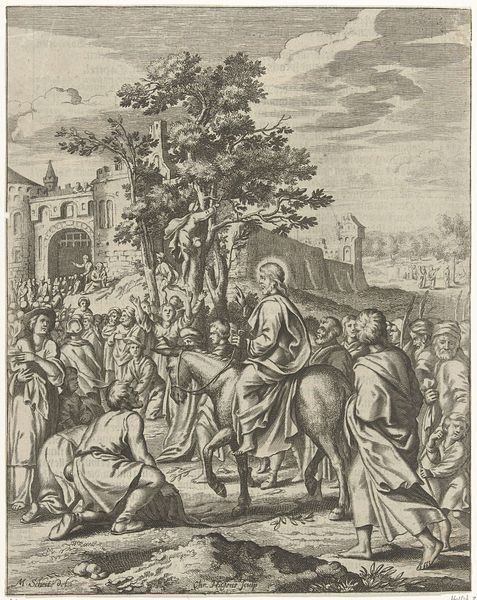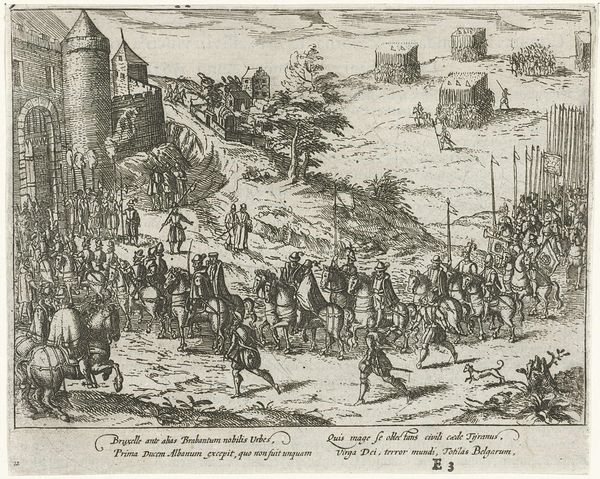
drawing, print, ink, engraving
#
drawing
#
ink drawing
#
narrative-art
#
pen drawing
# print
#
landscape
#
figuration
#
ink
#
history-painting
#
engraving
Dimensions: width 701 mm, height 452 mm
Copyright: Rijks Museum: Open Domain
Nicolaes de Bruyn created this engraving, "Ecce Homo", which translates to "Behold the Man", sometime between 1586 and 1656. De Bruyn situates us in a public square, amidst a sea of onlookers as Pontius Pilate presents Christ to the crowd. This image resonates with the religious and political tensions of the period, particularly the Protestant Reformation and the subsequent wars of religion. De Bruyn, working in the Netherlands, would have been acutely aware of the conflicts between Catholics and Protestants, and this print reflects a society grappling with questions of faith, authority, and justice. The crowd's varied reactions – indifference, curiosity, judgment – mirror the spectrum of beliefs and attitudes prevalent at the time. Notice the women in the foreground, collapsing under the weight of the moment, their emotional response contrasting with the stoicism of the male figures. How does their presence complicate the narrative of power and submission being enacted here? "Ecce Homo" invites us to reflect on the human dimensions of faith, power, and suffering.
Comments
No comments
Be the first to comment and join the conversation on the ultimate creative platform.
